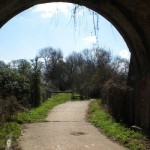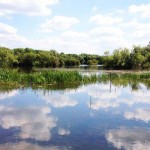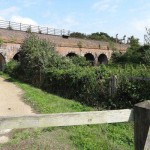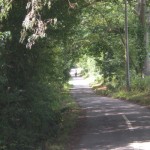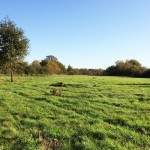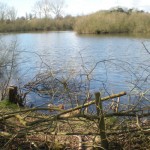We know that people were living in the Charvil area at least 2,000 years before the birth of Christ. Archaeologists refer to the gravel terraces at the confluence of the Thames and Loddon as being rich with sites of prehistoric date, particularly Neolithic and bronze age. Several prehistoric religious, funerary and settlement monuments are known around Charvil.
Those communities were basically primitive farmers, and agriculture remained the predominant occupation until early in the 20th century. In 1900 there were only 20 houses in the village. Even the introduction of the Great Western Railway between 1836 and 1838 had little impact on Charvil, although it clearly influenced the growth of Twyford and Reading.
Before the main A4 was built in 1928 the Old Bath Road, and old coaching road, was part of the main route from London to Bath and the West Country. A toll-gate – Twyford Gate, set up in 1736 by the Maidenhead Turnpike Trust – was located near the old Charvil Farm entrance. Maps of 1912 show that Charvil Farm had two exits onto the Old Bath Road, on either side of the toll-gate.
Two or three water pumps were located by the roadside in the turnpike area and these were used by the tenants of the old cottages nearby and, of course, by the many horse-drawn coaches passing through the gate. In later years they were also used by steam engines and for keeping the dusty dirt road well watered during the summer months. The old iron water pump at the entrance to Park Lane is said to have been installed in 1754, and was one of a series placed along the southside of the coaching road. This pump was renovated in the 1970s by Roland Hearn, charirman of the Charvil Parish Council at the time, and is now maintained by the Parish Council.
Charvil Parish Council was formed in April 1970 and now controls that part of Community Charge allocated for parish responsibilities. Parish councillors represent the views and concerns of parishioners to Wokingham District Council, Thames Valley Police and other statutory bodies. They work in cooperation with the District Council on many important matters, and are consulted about major planning matters and comment on planning applications. They are unpaid and sometimes unappreciated yet they put in a huge amount of effort on our behalf.
The Parish Council started with seven councillors in 1970, eventually increasing to 10 because of the burgeoning population. There have been 7 different chairmen and a total of 50 councillors.
The Parish Council has consistently supported attempts to control the extent and pace of development. When it has been inevitable, they have helped secure the best possible benefits for the community. The Hicks housing developer”s contribution of two acres of land and £80,000 towards the Parish Council”s fund for the village hall, and a large play area. The Bryant development on the Charvil Farm site eventually brought into public ownership 21 acres of open space adjacent to the River Loddon, now known as Charvil Meadows.
The development plan system, as it evolved over recent years based on Structure Plans prepared by the County Council and Local Plans prepared by the District Council, now means the infrastructure contributions can be required when significant development takes place. This can provide for highway improvement, open space provision, public buildings and a wide variety of other benefits.
The above are extracts from two booklets published by The Twyford & Ruscombe Local History Society written by Bill Crane, entitled “A Walk around Charvil” and “Dick Righton recalls Sandford & East Park Farms”.

